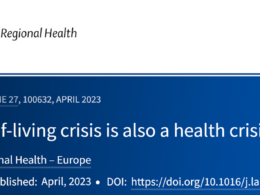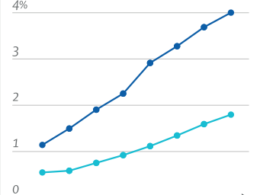the health strategist
institute for continuous health transformation
and digital health
Joaquim Cardoso MSc
Chief Researcher & Editor of the Site
April 25, 2023
ONE PAGE SUMMARY
A recent study by the University of California-Riverside reveals that poverty is the fourth leading cause of death in the United States, claiming approximately 183,000 lives in 2019 alone.
- The data is from the year prior to the COVID-19 pandemic, indicating that death rates due to poverty could be even higher currently.
- Household income was measured by all income sources, and poverty was defined as less than 50% of the median income.
- Cumulative poverty, which is the proportion of the past 10 years, was associated with higher mortality rates than accidents, lower respiratory diseases, and stroke.
- Additionally, poverty was found to be as deadly as dementia, accidents, stroke, Alzheimer’s, and diabetes, while only heart disease, cancer, and smoking were associated with a greater number of deaths than cumulative poverty.
The study’s lead author emphasizes that poverty should be given more attention from policymakers, as it not only causes great emotional suffering but also comes at a great cost.
The study’s findings also have major policy implications, particularly as certain ethnic and racial minority groups are more likely to be in poverty.
DEEP DIVE

Poverty Is the Fourth Leading Cause of Death in the United States, Study Finds [183,000 deaths in 2019]
Managed Health Care Executive
Briana Contreras
Apr 23, 2023
In the United States, poverty was found to be the fourth greatest cause of death. This threat to one’s health is also reported to be far higher in the U.S. compared to other countries.
In a recently published research letter in JAMA Network by University of California — Riverside, in 2019 there were roughly 183,000 deaths associated with poverty in the U.S. among people 15 years and older. This is a significant result as the data is from the year prior to the COVID-19 pandemic where death rates skyrocketed.
To get a better idea of the association between poverty and death in the U.S., researchers analyzed the Panel Study of Income Dynamics 1997- 2019 data merged with the Cross-National Equivalent File. Deaths reported in surveys were validated in the National Death Index, a database kept by the National Center for Health Statistics, which tracks deaths and their causes in the U.S.
Household income was measured by all income sources including cash and near-cash transfers, taxes and tax cred- its and was adjusted for household size.
With use of leading standards in international poverty research, poverty was measured relatively as less than 50% of the median income. Current poverty was observed simultaneously in each year, and cumulative poverty was the proportion of the past 10 years.
Data shared that broken down, those aged 15 years or older were of the 183,000 deaths associated to current poverty, and 295,431 deaths were associated with cumulative poverty. Current poverty was associated with greater mortality than major causes, such as accidents, lower respiratory diseases, and stroke.
Only heart disease, cancer, and smoking were associated with a greater number of deaths than cumulative poverty. Obesity, diabetes, drug overdoses, suicides, firearms, and homicides, among other common causes of death, were less lethal than poverty.
“
Poverty kills as much as dementia, accidents, stroke, Alzheimer’s, and diabetes,” said David Brady, the study’s lead author and a UCR professor of public policy, in a peer review. “Poverty silently killed 10 times as many people as all the homicides in 2019. And yet, homicide firearms and suicide get vastly more attention.”
Another finding is that people living in poverty — those with incomes less than 50% of the U.S. median income — have roughly the same survival rates until they hit their 40s, after which they die at significantly higher rates than people with more adequate incomes and resources.
In addition, these findings have major policy implications, the researchers say.
“Because certain ethnic and racial minority groups are far more likely to be in poverty, our estimates can improve understanding of ethnic and racial inequalities in life expectancy,” the paper reads.
Brady expressed the study shows that poverty should get more attention from policymakers as it not only causes great emotional suffering but also comes at a great cost.
“If we had less poverty, there’d be a lot better health and well-being, people could work more, and they could be more productive,” Brady said. “All of those are benefits of investing in people through social policies.”
According to a White House brief, over the last three decades, American families have experienced a rise in the costs of many necessities that has made it difficult for them to attain economic security.
It was estimated, for example, 80% of families saw the share of budgets dedicated to spending on needs such as housing and healthcare increase by more than 7 percentage points between 1984 and 2014.
Further, a 2019 Pew survey found that 37% of Americans worry about the cost of healthcare for themselves and their families.
Originally published at https://www.managedhealthcareexecutive.com on April 23, 2023.
NEJM
Poverty Is a Leading Cause of Death in the U.S.
Paul S. Mueller, MD, MPH, FACP Allan S. Brett, MD
Apr 20, 2023












